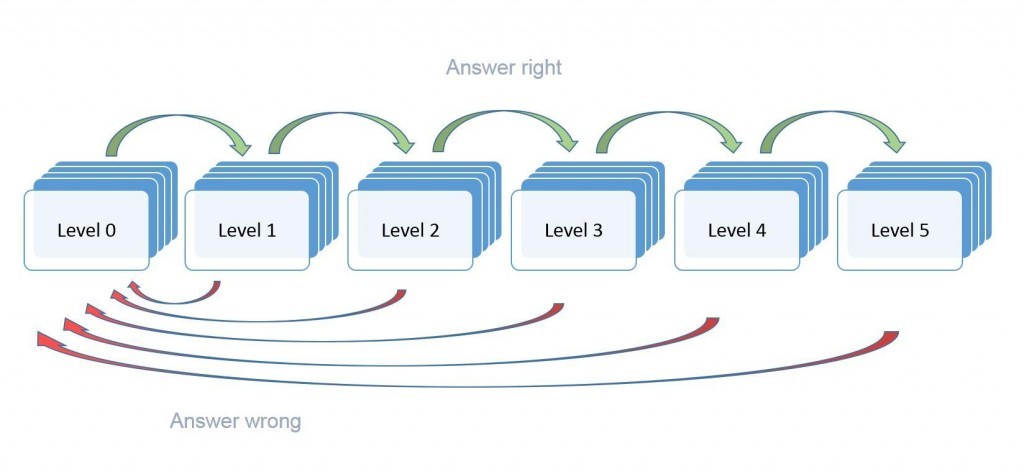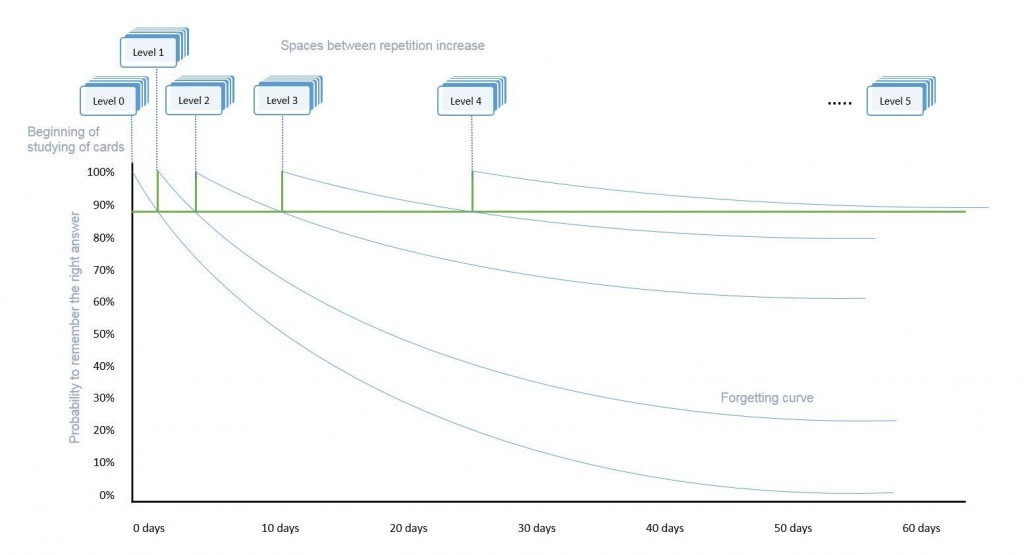Flashcard system based on Sebastian Leitner’s method, enhanced with automated spaced repetition intervals and KickStart Mode.
Pick from three systems
of your choice
Pauk is ideal for learning any subject that requires factual knowledge, covering everything from basic facts to foundational concepts for more advanced study. Traditional subjects like Vocabulary, History, and Economics are perfectly suited to this flashcard system. Additionally, Math can be effectively studied with Pauk as it helps memorize essential formulas and rules. The system is also excellent for preparing for theoretical exams, such as a driver’s license test, or for mastering content needed for professional presentations.
- Pauk is suitable for all educational levels.
- Provides a structured method to prepare for exams.
- Supports cutting-edge learning strategies to enhance short-term exam preparation and long-term knowledge retention. (Link to Source)
- Integrates seamlessly into your daily study routine.
- Increases exam scores while reducing study time.
- Enables younger scholars to independently prepare for tests, reducing dependency on parental support.
According to the Sebastian Leitner System, cards are organized into boxes labeled 0 through 5, indicating the depth of study for each topic. New cards, or those not yet learned, start in Box 0. As you study and memorize the cards, they are promoted to higher-numbered boxes. Cards in Box 5 are considered fully imprinted in your long-term memory. Any cards that are not correctly recalled will be returned to Box 0, regardless of their prior level.

It’s best to organize your flashcards into coherent lessons, each consisting of approximately 15-40 question and answer pairs. These lessons can be reviewed at any time, and it’s sometimes possible to progress your cards from level 0 to level 5 in a single session.
A key feature for efficient learning is the ability to learn each box individually instead of repeating the deck as a whole. You can focus exclusively on drilling individual boxes from each of the five levels. This approach can be particularly helpful if you have many cards already at level 5, allowing you to concentrate on the cards you haven’t yet mastered. This streamlined process enhances efficiency.
While studying cards in one session and advancing them all in a single day can aid in cramming for an exam, it’s crucial to ensure that you retain this knowledge in the long term by spacing out the intervals for card repetition. Based on our experience, drilling cards up to level 5 on at least two different days is essential for adequately preparing for basic exams like vocabulary. For more complex topics, you’ll need even greater spacing to solidify understanding and ensure long-term retention.
In addition to manual spacing, you can also utilize the automated ‘SpacedRep‘ option.” (Spaced Repetition, SRS)
SpacedRep, automated spacing of intervalls for repetition
The ‘SpacedRep‘ feature utilizes the same boxes as manual timing but automatically calculates ideal intervals for card repetition. This system tests you on each card right before you’re expected to forget the answer. Default spacing values in Pauk are based on literature and resemble the Fibonacci number sequence. Additionally, there’s a self-learning algorithm called ‘MySpacing,’ which adapts repetition intervals to your individual learning style and the complexity of the cards you’re reviewing. How this works in Pauk: only cards that are due for repetition will be visible. Cards that are not yet due will disappear from the deck, but don’t worry, they are not deleted. They will reappear when they are due again.
In Pauk, you have the flexibility to either disable spacing, use your own manual spacing, utilize the default intervals, or employ the self-learning automated spacing to enhance your learning experience.

Spacing out your repetitions is essential for retaining facts in your long-term memory. Although it may require more time to prepare for exams, it results in fewer repetitions. This method has been shown to be more efficient for learning.
Kickstart mode
KickStart is a specific learning algorithm designed for memorizing topics from scratch. It has two main functions: breaking lessons automatically into smaller, more manageable units for easier memorization, and prioritizing incorrectly answered cards for more frequent and rapid review.
1. A speedy and frequent review of every incorrectly answered card
Memorizing wrong answers: There’s a risk of memorizing an incorrect answer instead of the card’s correct answer. Why does this happen? The effort required to recall a memory is much greater than simply recognizing the correct answer while easily reading it from the back of your card. Consequently, we often memorize self-constructed answers, as the correct answer written on the back of a card may not leave a strong enough impression to overwrite our memory of a self-constructed answer. It’s crucial to promptly and thoroughly correct this false memory before it becomes entrenched in our long-term memory. The most efficient way to address this is to more quickly repeat wrongly answered questions before progressing through the entire deck, which the tool does automatically for you in KickStart mode.
2. Automated splitting of lessons
Furthermore, KickStart divides entire lessons automatically into smaller, easily digestible units. These smaller portions can be rapidly drilled to level 5 and are automatically taken out of the repetition cycle.
Exam Mode
Human nature implies that it’s not always possible to follow this plan consistently due to daily commitments such as work, social events, or other obligations. The ultimate goal before an exam is to ensure that every flashcard reaches at least level 4, with the majority achieving level 5. But what about the remaining cards that haven’t reached these levels yet? To address this issue, you can quickly boost your subject knowledge with the exam mode.
We assume that cards at levels 4 or 5 are well-known and stored in your long-term memory. While you can always do a quick review of these cards, there’s little reason to overdo it – you’ll likely become bored if you repeat them too much. At this stage, it’s best to focus on cards in boxes 0, 1, 2, and 3.
Exam mode allows you to select individual levels to focus on. Levels 0, 1, 2, and 3 are particularly crucial right before an exam, as they should be elevated to levels 4 and 5. We’ve observed that typically, only 15% of cards are in these lower boxes, with the remaining 85% already at levels 4 and 5. This means you should concentrate on the 15% you don’t know. This approach can save you a significant amount of time by targeting your areas of weakness rather than revisiting what you’ve already memorized. By doing so, you can effectively manage the repetition of a large amount of material just before your exam.

 Pauk
Pauk